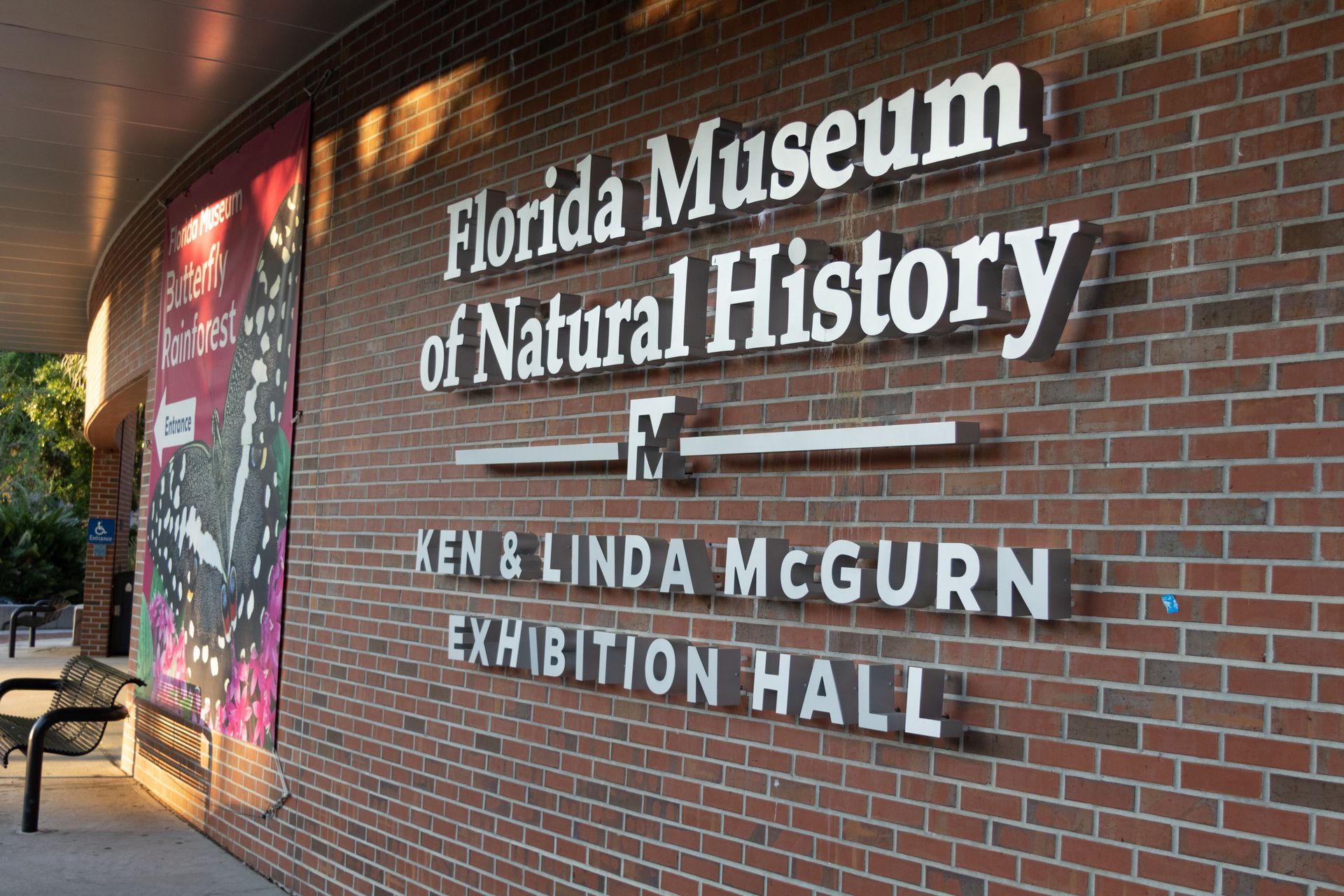Florida Museum of Natural History

One of the most notable attractions in Gainesville, the Florida Museum of Natural History aims to inspire every visitor to learn more about the natural world around them and to help shape a better future.
As there is a lot to see and do at the museum, we’ve put together a short guide to help you know what to expect when you visit.
Museum Locations
The Florida Museum of Natural History is a collection of multiple halls on the University of Florida campus, with only two buildings being open to the public.
Powell Hall Info
- Phone: 352-846-2000
Nestled between the Samuel P. Harn Museum of Art and the Curtis M. Phillips Center for the Performing Arts, Powell Hall is the main education and exhibition center for the Museum. Since its opening in 1998, Powell Hall has housed both temporary and permanent exhibitions that help visitors discover the natural habitats and cultural history of Florida.
While the general admission is free, some exhibits have a cover charge.
McGuire Hall
- Phone: 352-392-5894
The newest addition to the Florida Museum of Natural History, the McGuire Hall is a 35,000 square-foot facility that houses the McGuire Center for Lepidoptera and Biodiversity, which is the largest center in the world dedicated to the study of butterflies, moths, and skippers. The Hall features one of the largest collections of Lepidoptera specimens in the world, many of which are featured on the “Wall of Wings”, a three story tall exhibit that contains more than 13,000 images as well as specimens, info panels, and maps.
The McGuire Hall is also home to the Butterfly Rainforest, the most popular exhibit at the entire Museum, which we will cover later in more detail.
Like the Powell Hall, general admission is free, although some exhibits, like Butterfly Rainforest, require a cover charge.
Permanent Exhibitions
The Florida Museum of Natural History has eight permanent exhibits on site that have remained popular with visitors over the years. Here are a couple of our recommendations for exhibits that you need to see the next time you visit.
Butterfly Rainforest
As stated before, the Butterfly Rainforest in Gainesville is the most well known exhibit at the Florida Museum of Natural History, and for good reason.
Stepping into the exhibit feels like stepping into another world. The lush landscape is filled with tropical trees as well as strikingly colorful flowering plants along the winding pathway through the forest. Along the way, you’ll be able to appreciate several tranquil waterfalls, around which live a diverse array of fish and turtle species.
Throughout the exhibit, you’ll experience hundreds of free-flying birds, butterflies, and moths firsthand. At times, you’ll be able to view the butterflies up close as they feed on fresh fruit.
During your journey through the Butterfly Rainforest, you’ll come across skilled interpretive staff that can both answer questions and help provide you with an engaging experience.
You can buy tickets for the Butterfly Rainforest at the Museum website.
South Florida People & Environments
This exhibit takes visitors on a journey to discover more about South Florida estuaries. Many of the galleries give fascinating details about why these geographical features are some of the richest ecosystems on Earth.
Visitors also learn about how people throughout the years have been supported by these amazing ecosystems, including the Calusa, which once ruled all of South Florida.
Some of the notable parts of the exhibit include:
- A Full-scale mangrove forest full of plants, animals, and natural sounds
- An underwater scene featuring marine life at 12 times life-size scale.
- An artifact-rich gallery spanning 6,000 years of Florida Gulf fishing history.
- An archaeology collection featuring rare artifacts that speak to the legacy of South Florida Native Americans.
The South Florida People & Environments exhibit is free to the public.
Florida Fossils: Evolution of Life and Land
The Florida Museum of Natural History is internationally acclaimed for its extensive collection of fossils, many of which are on display at the Florida Fossils exhibition.
The fossils on display tell stories from the last 65 million years of Earth’s existence, giving visitors a glimpse into the biodiversity of the past. You’ll find creatures of all kinds, many of which were found within a hundred miles of Gainesville.
You’ll also learn more about the current state of fossil research as well as how fossils are discovered, cataloged, and collected from start to finish.
The Florida Fossils exhibit is free to visit.
Special Exhibits
The Museum hosts several temporary exhibits that dive deeper into our natural world, both past and present. Most of these exhibits require a ticket purchase to visit.
An example of one of these exhibits was “Spiders Alive!” which was on display for most of 2023. Visitors were treated with being able to view over a dozen live species of spiders, scorpions, and their relatives. Through large touchable models as well as videos showcasing unique behaviors from these species, the exhibit was able to separate fact from fiction regarding these types of creatures.
Visit the Florida Museum of Natural History website to learn more about the current temporary exhibits.
Stay at the Magnolia Plantation
After an exciting day learning more about the world around us, you can come back and relax in a quiet, historical environment. Stay in a unique, authentic Victorian mansion that blends luxuries from the past and present. We also offer a number of cottages that offer the utmost privacy and comfort. We pride ourselves on helping every guest get the recharge they need to better enjoy what Gainesville has to offer.
Browse our accommodations and book your stay today!
